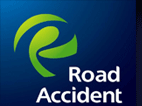|
 MANDATE MANDATE
The RAF is a juristic person established by an Act of Parliament, namely, the Road Accident Fund Act, 1996 (Act No. 56 of 1996) as amended (”RAF Act”). It commenced operations on 1 May 1997, assuming at the time, all the rights, obligations, assets and liabilities of the Multilateral Motor Vehicle Accidents Fund.
The RAF is responsible for providing appropriate cover to all road users within the borders of South Africa; rehabilitating and compensating persons injured as a result of motor vehicles in a timely and caring manner; and actively promoting the safe use of all South African roads. Section 3 of the RAF Act stipulates that “the object of the Fund shall be the payment of compensation in accordance with this Act for loss or damage wrongfully caused by the driving of a motor vehicle”. The client base of the RAF, therefore, comprises not only the South African public, but all foreigners within the borders of the country. The RAF provides two types of cover, namely personal insurance cover to accident victims or their families, and indemnity cover to wrongdoers.
PREDECESSORS
Prior to 1997, the system of compulsory motor vehicle accident insurance was governed by the following legislation:
-
Motor Vehicle Insurance Act, 1942 (Act No. 29 of 1942)
-
Compulsory Motor Vehicle Insurance Act, 1972 (Act No. 56 of 1972);
-
Motor Vehicle Accident Act, 1986 (Act No. 84 of 1986); and
-
Multilateral Motor Vehicle Accidents Fund Act, 1989 (Act No. 93 of 1989).
ECONOMIC ROLE
Road transportation is a critical element supporting and directly contributing to growth in any economy. Road accidents are, unfortunately, a negative consequence of this economic growth, affecting both economically active members of our society and other citizens. Free markets, and in particular the private sector, do not fully address the impact of road accidents on society and the economy.
The RAF provides a social security safety net to the country and economy by making available compulsory social insurance cover to all users of South African roads. Contributions to the RAF are done by way of a levy on fuel used for road transportation. The cover extends to all members of society including, but not limited to, the poor, children, legal and illegal immigrants, foreigners, owners and drivers of motor vehicles, as well as their passengers. The social insurance cover, however, does not extend to drivers of motor vehicles that are found to be negligent.
SOCIAL ROLE
The socio-economic role of the RAF is to re-integrate victims of road accidents into society, from a health and economic perspective, and protect wrongdoers and their families from financial ruin. This is done by the RAF paying the medical and related services costs required to restore accident victims to health, compensating the victims or their families for income or support lost as a result of the accident and indemnifying the wrongdoer from liability. In addition, the RAF pays general damages to accident victims, which represent compensation for pain and suffering, loss of amenities of life, disability and disfigurement, as well as funeral costs to families in circumstances where the victim of the accident sustains fatal injuries.
GOVERNING STRUCTURE
The RAF, as established by the RAF Act, does not have share capital. It is owned by the South African public. It is listed as a national public entity in accordance with schedule 3A of the PFMA.
Government’s governance oversight over the RAF includes:
-
Parliament (National Assembly) through the relevant Portfolio Committee and the Standing Committee on Public Accounts (SCOPA);
-
The Executive Authority, the Honorable Minister of Transport; and
-
The Board of the RAF.
|






































































